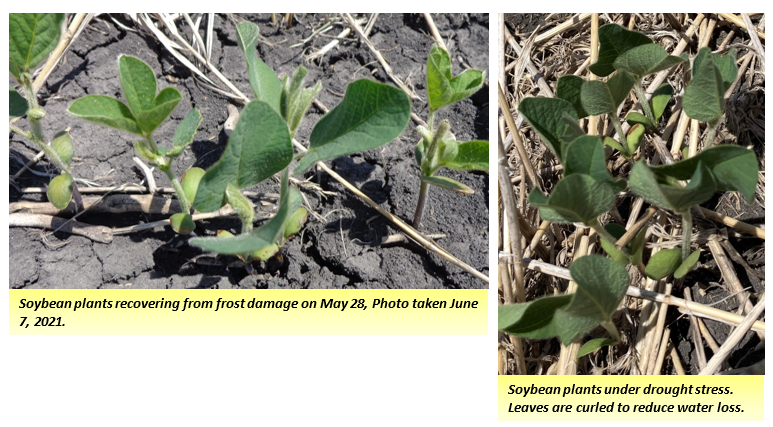Plant Stress 2021 (06/10/21)
The term “plant stress” is used when conditions interfere with normal plant growth. Some of the recent stress factors have been a frost event at the end of May, continued dry conditions throughout the state, and extreme heat for the time of the year. Drought causes a water deficit therefore plants do not develop at normal rates. Water deficit affects the translocation of water in the plant, reduces leaf expansion, lowers the gas exchange in the leaf, reduces photosynthesis, and consequently leads to reduced yield potential. Plant growth depends on the photosynthetic rate per leaf and total leaf area. In water deficit conditions, plant photosynthetic activity is reduced due to the decreased carbon fixation rate since hot temperatures often induce stomatal closure.
During hot conditions, plant leaves are rapidly losing water, and the plant may not be able to supply the demand for water quick enough. Plants try to minimize water loss by closing leaf stomata and sometimes curling the leaves.
Water stress can also reduce N2 fixation in legume crops. The reduced N2 fixation activity is partially due to fewer photosynthates available for translocation to the nodules and water deficiency in the nodules.
Unfortunately, there are no quick options to alleviate drought and or water stress conditions without irrigation.

Extension Agronomist Broadleaf Crops


